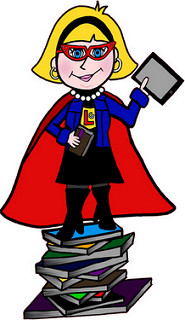 |
| Photocredit: Gwyneth Jones-- http://www.thedaringlibrarian.com/ |
First, one of the iPads wouldn't load the app. Reset and we were on our way. Then the realization hit us (the fearless librarian and I) that every student would have to set up an account. This was a surprise since most apps allow the teacher to hold the account and then add the students to that account.
In addition to all this confusion, whenever we tried to set up a different account, the iPad insisted on thinking for us and just sent us back to square one--because WE were obviously confused.
Have you ever been there?
There is a word that this type of experience can easily create: Technofear: The fear of using technological devices such as computers. Definition
While this generation has no fear of using technology, teaching with it can be more intimidating! Sitting at home and getting stuck trying to figure a computer glitch is one thing; watching a classroom full of students dissolve into chaos while you try to figure it out is quite another. Fortunately in this situation, there were two of us and while one "figured it out" the other moved on to another part of the project. Plan B!!!!
That is the key to it, you know. Always have a Plan B in the back of your head! As you write your plans, think: "How will I do this if the technology doesn't work?" It is just good teaching. Before technology, I often began to write on the white board and discovered that every marker had died. Plan B! These things happen all the time.
I loved the librarian's attitude! "You can blog about this is you want to. These things happen when you try to use technology." That is exactly right. If you don't step out and use technology--well then, nothing can go wrong with it. That is why so many teacher observation evaluations now have "use of technology" included. No one wants to have a lesson go south and get a bad evaluation because technology was voluntarily added!
Think about this while planning lessons! Be FEARLESS super teachers!
*Teacher Librarians roles in the schools are changing! "Our essential functions as Teacher - Librarians are to provide information and technology instruction, reading advocacy, and information management." Read More!
Watch a video about Teacher Librarians







